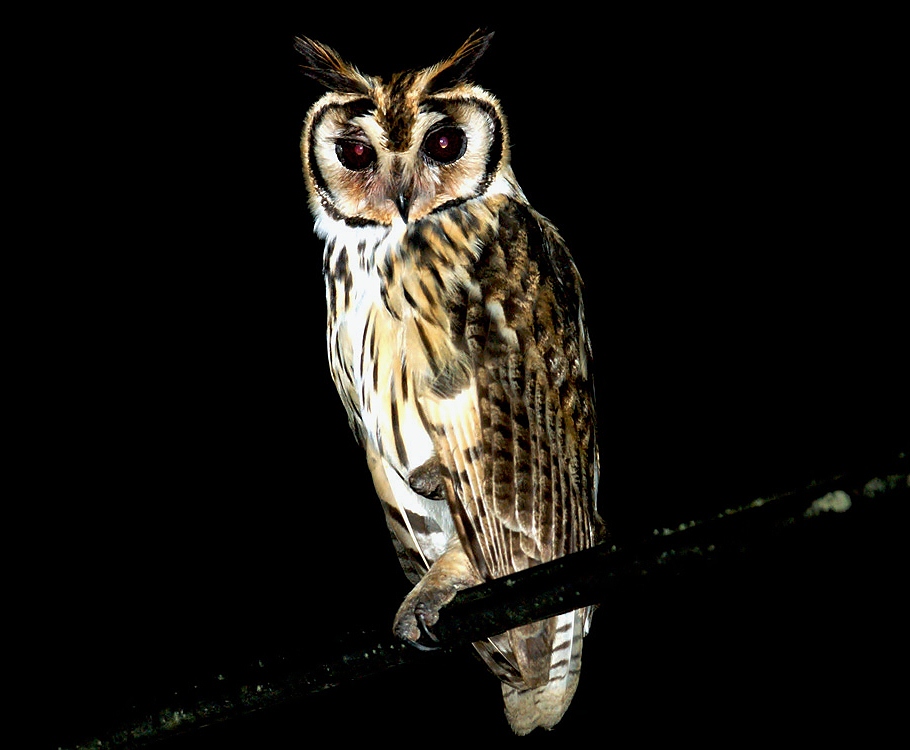 |
| Photo by Michel Giraud-Audine (Flickr) |
Common name:
striped owl (en); coruja-orelhuda (pt); hibou strié (fr); lechuzón orejudo (es); schreieule (de)
Taxonomy:
Order Strigiformes
Family Strigidae
Range:
There are four different subspecies with disjunct ranges. P. c. forbesi is found from southern Mexico to Panama. P. c. clamator is found in Colombia, Venezuela, the Guyanas, extreme northern Brazil, Ecuador and north-eastern Peru. P. c. oberi is only found in the Caribbean islands of Trinidad and Tobago. P. c. midas is found from central Brazil and Bolivia down to central Argentina and Uruguay. The striped owl is absent from the Amazon basin.
Size:
These birds are 30-38 cm long and have a wingspan of 76-94 cm. Males are smaller and weigh 320-385 g while females weigh 400-555 g.
Habitat:
Striped owls are found in a variety of habitats, namely wet grasslands, along the edges of tropical moist forests and swamp forests, savannas, scrublands, fresh water wetlands, irrigated land, pastures, agricultural areas and even within urban areas. They are present from sea level up to an altitude of 1.400 m.
Diet:
They mainly feed on rodents, but also bats, large insects, medium-sized birds and sometimes also lizards.
Breeding:
The striped owl breeds in August-March. They nest on a scrape in the ground, usually
hidden among long grassy clumps or thick scrubs. The female lays 2-4 eggs, which she incubates alone for 33 days. The chicks are fed by the female while the male provides her with food, fledging 37-46 days after hatching. Usually only 1-2 chicks survive to fledging. They remain in the parents territory for another 4-5 months.
Conservation:
IUCN status – LC (Least Concern)
This species has a very large breeding range and a global population estimated at 500.000-5.000.000 individuals. The population is suspected to be stable in the absence of evidence for any declines or substantial threats.







